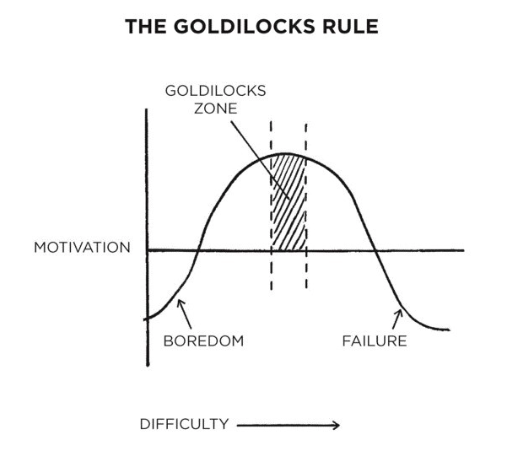
For many agencies, the setting of company and individual goals provides a chance to align everyone around the business strategy, and refocus on the organisation’s mission and vision.
Yet for some, goal setting can seem like a daunting task. But it doesn’t need to be! Like flexing a muscle, the more you do it, the easier it becomes to do every time you go through the process.
In this article I’m going to try and provide some ways that goals can become a crucial part of your business strategy.
The eight tips:
- What is the ‘WHY’?
- Define WHERE you want to get to
- Work out WHAT you’ll do to get there
- Define HOW you’ll measure progress
- Align EVERYTHING
- Make goals setting a collaborative exercise
- Make goals challenging, but not impossible
- Keep financial rewards out of the picture
1. What is the ‘WHY’?
In other words, any goal you set should have an impact of some sort.
Goals should set direction and purpose for everyone, and aid understanding of how you get to where you want to be.
Yet goals are often set because they sound fancy or ambitious. And frequently, they lack impact because they’re set in a rush as people do them just to ‘check another box’.
Setting half-arsed goals can be a distraction to what’s actually important. Lack impact, and you gradually reduce buy-in for the process, and end up with goals which lack meaning.
Ultimately, goals should be in place because they align everyone with the mission of the business, and facilitate the movement towards that.
If you can’t easily explain why a certain goal has been set in line with the company mission or vision, then scrap it and go back to the drawing board.
2. Define WHERE you want to get to
When you start setting specific goals, make sure they are both clear and ambitious.
SMART goal setting methodology would tell you that they need to be measurable. And this is true (as I state shortly). But to increase buy-in, you need some clear, headlining grabbing ambitions that set out (in as plain a way as possible) what is expected of everyone.
Let’s work with an example: An agency that is focused on their people and culture may decide to have a goal such as ‘Build a reputation as the best agency to work for in the UK’.
It’s big, it’s bold, it’s ambitious. And whilst it may not be particularly unique (let’s be honest, most agencies want to achieve this), at least everyone across the business understands what the goal is.
Everyone understands where you want to get to.
Ideally, these goals should be set with the long-term in mind. Something like ‘be the best agency to work for’ isn’t something that can be set and achieved in a quarter – it’s something which needs to be built up over time, and it needs to be made clear to everyone that this is the case.
3. Work out WHAT you’ll do to get there
Whilst big, ambitious goals are great for providing clarity and increasing motivation around a common cause, without figuring out the practical steps to reach the goal, they’ll never generate any accountability and lack direction.
Ultimately, this means you’ll just be firing shots in the dark!
Each of your goals should have anywhere between three and five practical steps to help you plan your progress towards achieving it.
Notice how I say ‘progress’ as opposed to ‘complete’ the goal? Most ambitious goals will not be fully completed in a single cycle. Completing them the first time means they’re too easy to start with!
Taking the ‘Build a reputation as the best agency to work for in the UK’ example from above, some of the practical steps to get there may include things like:
- Implement a career development framework for employees
- Introduce an employee mentorship scheme
- Start a quarterly employee engagement survey
- Start working with Reflect Consultancy 😉
These should all be things which are achievable within a shorter time frame (for example on a quarterly or half-yearly basis). Then, come the end of that period, you can then assess progress and either refine these or set new steps to start moving you even closer to your ambitious goal.
4. Define HOW you’ll measure progress
This is where the real nitty gritty starts!
Whilst big goals sound great and can rally everyone behind a clear mission, you also need to understand how that success will be measured.
Your measurements (or KPIs) are things that should be monitored regularly to see if progress is being made, and are going in the direction you need them to. Using a scorecard system (such as the one within the EOS framework) is useful here for keeping the important numbers related to your goal front and centre of mind.
Again, taking the example above, some of the things that you may want to measure could include:
- Employee turnover/retention rates
- Employee engagement/pulse survey scores
- Probation period success rates
- Glassdoor reviews
- % of employees passing probation
At first you may not have an idea of what ‘good’ looks like, unless you have a barrel of historical data to refer back to. In this case you’ll want to spend a bit of time gathering the relevant data and benchmarking current performance. After a few months you’ll then be able to set more informed targets to achieve moving forward.
5. Align EVERYTHING
As mentioned earlier, goals should only be set when they are looking to achieve some sort of meaningful impact. The trouble is, goals at the individual level, or even department level can lack impact if they do not tie in with what the company is looking to achieve.
Instead, each level below ‘Company’ should look to align each of their objectives with one from above.
Going back to the example above, this may look like the following:
- Company goal: Build a reputation as the best agency to work for in the UK
- SEO department goal: Roll out the career development framework and ensure all team members are using it
- Individual goal: Build a professional development plan based on the career development framework
Do this throughout the business and you’ll have a company full of people that understand their purpose in the wider context; in other words – how they play a part in achieving something bigger than themselves.
6. Make goal setting collaborative exercise
Whilst alignment is a great way of helping people understand what the company wants to achieve, having goals forced upon you personally is not particularly motivating!
People need to buy-in to the goals being set if they have any involvement in achieving them personally.
For example:
- Company goals should NOT just be set by the CEO. Instead, they should include all members of the leadership team, making inputs based on their own areas of accountability
- Department goals should NOT just be set by the department head. Instead, they should include all members of that team who can offer a variety of perspectives based on their own unique challenges.
- Individual goals should NOT be set by that person’s manager. Instead, employees and managers should work together to come up with goals to achieve based on the aims of the department, that utilise that individual’s strengths and help their professional development.
7. Make goals challenging, but not impossible
There’s a reason there’s the ‘A’ in SMART goals. Ensuring that your goals are actually attainable provides a motivation to push yourself, yet not become demotivated by making them impossible to achieve.
The Goldilocks Rule of motivation states that ‘humans experience peak motivation when working on tasks that are right on the edge of their current abilities’. Too easy and things become boring very quickly. Too hard and they have the opposite impact, making people feel not good enough and frustrated by their lack of progress.

Hitting that sweet spot in the middle is therefore key to making goals exciting to work on, gain buy-in, and ensure people remain engaged with the process.
8. Keep financial rewards out of the picture
Monetary rewards worked in the old days of ‘carrot and stick’ management, where individuals had to conduct repetitive tasks and do things quickly, such as in a factory.
But in our modern-day world of ‘knowledge workers’, where many of us are in roles which require creativity, innovation and collaboration with others, introducing financial rewards can have the opposite impact.
In fact, they can actually limit performance.
Don’t believe me? Read Daniel Pink’s book Drive (which contains lots of examples and evidence on why they don’t work).
Introducing a financial incentive for hitting a certain target means the individual instantly becomes focused on the money, as opposed to being motivated to do a good job.
Focusing on money can lead to shortcuts being taken, or even manipulation of the results in order to gain the monetary reward.
Instead of focusing on money (which most people are not motivated by beyond a certain point), try to focus on factors of intrinsic motivation, such as;
- Purpose – the part they are playing in something bigger
- Mastery – developing personally & professionally to become the best they can be
- Autonomy – gaining greater freedom & independence
Goals should exist as a way to focus on the big picture and move the business (or that individual’s personal development, which in turn aids the business) forward.
Set goals in the right way, by making them exciting, ambitious and clear, and you won’t need to introduce monetary rewards.
